
In today’s digital world, QR codes (or Quick Response codes) have gained immense popularity as a convenient method of storing and retrieving information. In 2022, approximately 89 million individuals in the United States used their smartphones to scan QR codes. A survey conducted in June 2021 revealed that 45 per cent of American shoppers utilised QR codes to access exclusive deals or promotional offers. These statistics demonstrate the widespread adoption and usage of QR codes.
QR codes can store various data, including numeric and alphanumeric information as well as binary data and Kanji characters. Their ability to quickly connect users to websites, promotional content, and contact information has made QR codes popular for businesses and individuals.
However, with technology constantly evolving, it is important to explore alternatives to QR codes. QR codes have limited design flexibility, making them less suitable for certain branding or aesthetic requirements. Furthermore, QR codes can be easily replicated or tampered with, posing potential risks to privacy and security.
In this blog post, we will delve into various QR code alternatives, highlighting their advantages and potential applications.
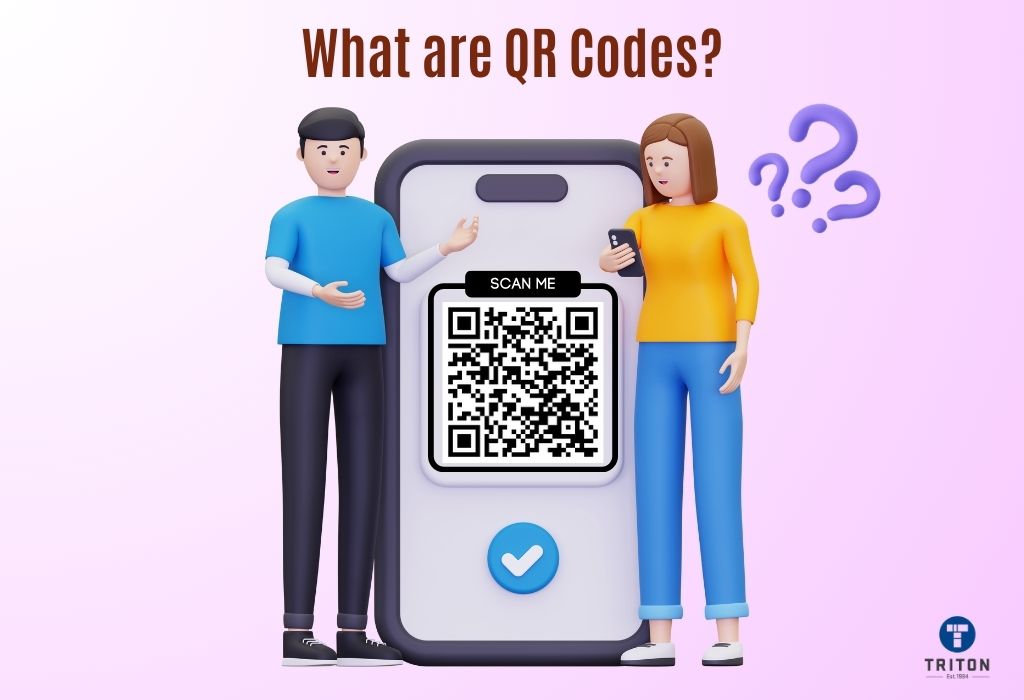
QR codes were introduced by Denso Wave in 1994. These codes revolutionised the barcoding world due to their ability to store more data than traditional barcodes. Initially developed for tracking automobile parts, QR codes quickly expanded their utility to various applications and industries.
The maximum amount of data that a QR code can hold depends on the type of information being stored. It can hold up to 2953 bytes of data, 4296 alphanumeric characters, 7089 numeric characters, or 1817 Kanji characters.
Today, QR codes have found diverse applications in various industries. They are used to create electronic tickets, name cards, and airport flight ticketing systems. QR codes facilitate contactless payments and power marketing campaigns. It is a convenient tool for businesses and customers to access information swiftly.
QR codes are popular among marketers and customers because they are easy to use and can transfer large amounts of data with just one scan without much effort.
Refer to our article on what are QR codes to learn more about this 2D barcode symbology.
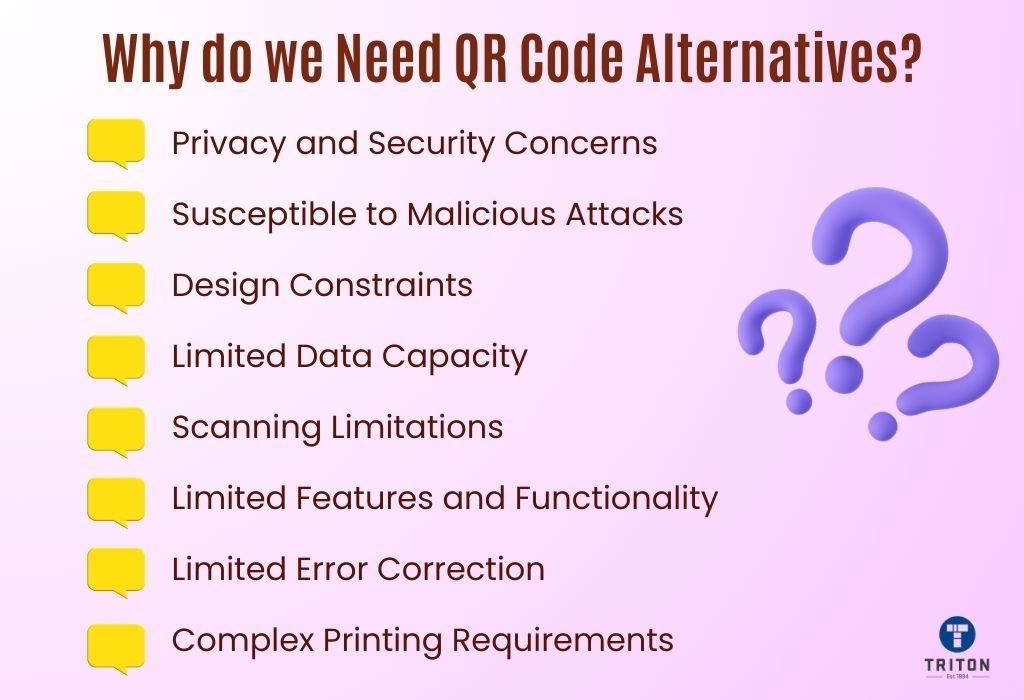
Despite widespread use and popularity, QR codes fall short due to their effectiveness in certain scenarios.
One primary reason is privacy and security concerns. Since QR codes can be read (using QR code readers or mobile devices) and created by anyone (using a QR code generator/online QR code generators), duplicating them is as easy as taking a picture. Using QR codes for payments and mobile transit ticketing can be risky.
QR codes can be susceptible to malicious attacks, such as QR code phishing or redirecting users to a malicious web page. Users should exercise caution and verify the source and destination of QR codes before scanning them to ensure their safety.
Additionally, using QR codes in ticketing systems can sometimes lead to issues such as slow boarding processes and congested lines. This is due to the time it takes for each passenger to scan their individual codes.
Furthermore, in certain cases, transportation agents may need to physically handle a passenger’s phone, which can cause some passengers discomfort or concerns about privacy. These challenges highlight the need for alternative solutions that provide a seamless and hassle-free experience.
Some of the key limitations of QR codes include.
QR codes have a distinct square shape, which can sometimes limit their placement and integration into design elements. The square shape may not always align well with curved surfaces or restrictive spaces. It is challenging to incorporate QR codes seamlessly into certain marketing materials or product packaging due to their fixed square step.
While QR codes can store substantial data compared to traditional linear barcodes, they still have a finite data capacity. The maximum amount of data that can be stored in a QR code is 2953 bytes of data, 4296 alphanumeric characters, 7089 numeric characters, or 1817 Kanji characters.
However, QR codes are not sufficient for larger files, leading to the need for alternative barcodes.
QR codes rely on smartphone cameras or barcode scanners for scanning, which may not always be readily available or accessible. Exploring other options may be necessary when scanning devices are limited or when alternative data retrieval methods are desired.
Depending on the specific application or use case, alternative options may offer additional features and functionalities that QR codes lack. This can include advanced encryption capabilities, improved error correction, or integration with emerging technologies such as augmented reality.
QR codes have built-in error correction capabilities that allow them to be partially damaged or obscured while still being scannable. However, there is a limit to the level of error correction. A QR code may become unreadable if it is excessively damaged or distorted. The QR code has a tolerance of up to 30% damage.
QR codes need to be displayed in a clear and visually accessible manner for scanning. Factors such as distance, angle, lighting conditions, and print quality can affect the readability of QR codes. If the code is printed on reflective or uneven surfaces, it may become difficult for scanners to capture accurate data.
As technology continues to evolve, barcode symbologies with enhanced capabilities and features have emerged to address these limitations.
In the next section, we will look into some alternatives to QR codes, discussing their advantages and applications.
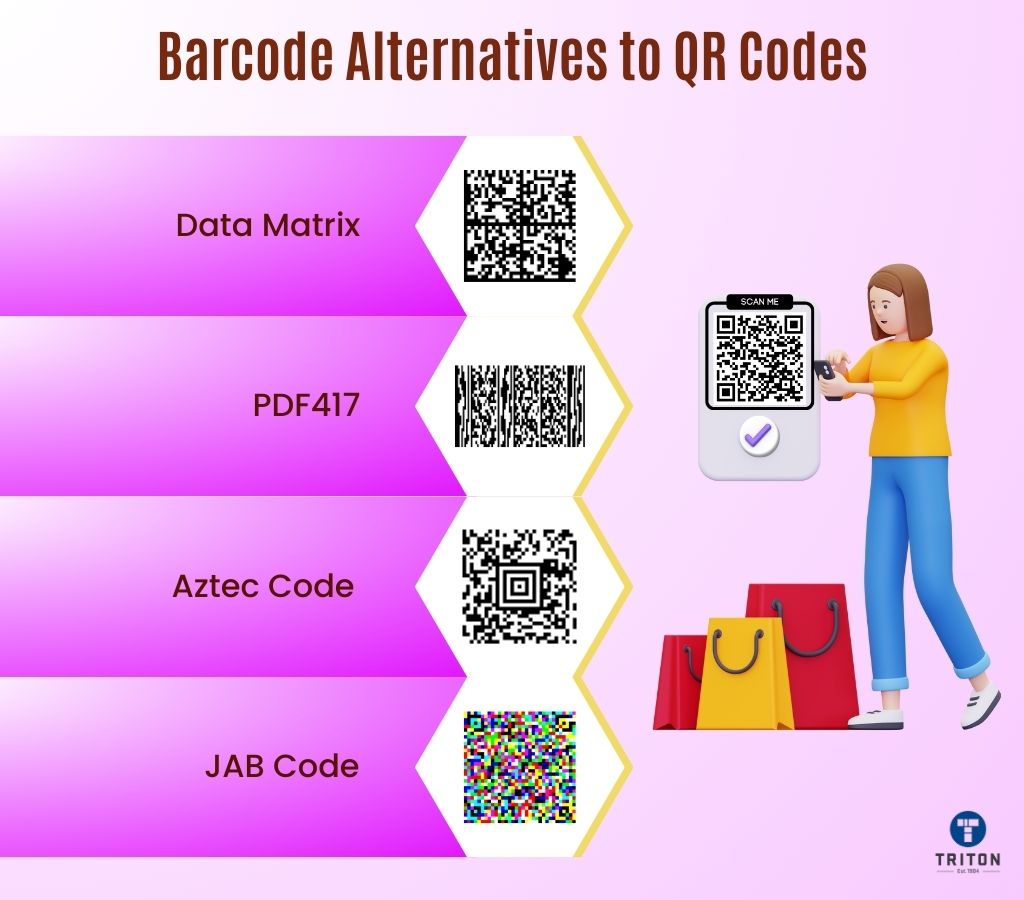
The Data Matrix barcode is a two-dimensional barcode symbology that offers several features and benefits.
One of its key advantages is its high data density, which allows for storing large amounts of information within a compact space. Data Matrix codes can encode up to 2335 alphanumeric characters, 3,116 numerical characters, or 1556 bytes of information.
Another notable feature of Data Matrix codes is their resolution flexibility. Unlike traditional barcodes that require a minimum resolution of 80%, Data Matrix codes can be read at much lower resolutions, sometimes as low as 15%.
Furthermore, Data Matrix codes offer omnidirectional reading capability, which can be scanned from any direction. This eliminates the need for precise alignment during scanning, making them more convenient and user-friendly than linear barcodes. Check out our article on what are omnidirectional barcode scanners to learn more.
In summary, Data Matrix codes are an ideal choice for applications where space is limited and large amounts of information need to be stored. Their flexibility in terms of resolution and omnidirectional reading capability enhance their usability, making them a valuable alternative to QR codes.
Barcode | Data capacity | Error-correction leve | Minimum size |
|---|---|---|---|
QR code
| 2953 bytes,
4296 characters,
7089 digits,
1817 Kanji characters
| 30%
| 2 cm,
21 modules
|
Data Matrix code
| 2335 characters,
3,116 digits,
1556 bytes
| 33%
| 5 mm,
10 modules |
Check out our article on what is a Data Matrix code for more information.
PDF417 barcodes are regarded for their exceptional data storage capacity within a compact symbol. With the ability to encode up to 1850 alphanumeric characters, 2710 digits, or 1108 bytes of data in a single barcode, PDF417 stands out as a solution for information-intensive applications.
One notable advantage of PDF417 is its versatility in handling various data types. It supports encoding alphanumeric characters, numerical digits, and binary data, offering flexibility in storing diverse information.
PDF417 is popular due to its large data capacity and adaptability, making it suitable for various industries. It is highly favoured in the transport sector, where it is used for ticketing systems, storing passenger details, journey info, and ticket validation.
Additionally, PDF417 finds applications in inventory management. It enables the efficient tracking and management of large quantities of items by encoding relevant product details.
Barcode | Data capacity | Error-correction level | Minimum size |
|---|---|---|---|
QR code | 2953 bytes,
4296 characters,
7089 digits,
1817 Kanji characters
| 30% | 2 cm,
21 modules
|
PDF417 code
| 1108 bytes,
1850 characters,
2710 digits
| 0% to 50% | 22 mm,
90 modules |
To learn more about PDF417 code, check out our detailed guide on what is a PDF417 code.
The Aztec code is a two-dimensional barcode symbology designed to store large amounts of data in a small area, making it a valuable option for data storage.
Aztec barcodes have an impressive data capacity, allowing them to store significant amounts of information. Aztec barcodes can accommodate extensive data requirements with a symbol capacity of up to 3,832 numerical digits, 3,067 alphabetic characters, or 1,914 bytes of data.
Despite their ability to store large amounts of data, Aztec barcodes maintain a compact size. This makes them well-suited for applications where space is limited, such as on product packaging or identification cards. Additionally, Aztec barcodes do not require quiet zone areas around the barcode, further reducing their size and enabling efficient use of available space.
Furthermore, Aztec barcodes offer omnidirectional scanning, which can be scanned from any direction or orientation. This versatility allows quick and efficient scanning, reducing the time required to capture the encoded information.
Additionally, Aztec barcodes can encode different data types, including numeric, alphanumeric, and binary data. This flexibility makes them suitable for a wide range of applications across various industries.
Barcode | Data capacity | Error-correction level | Minimum size |
|---|---|---|---|
QR code
| 2953 bytes,
4296 characters,
7089 digits,
1817 Kanji characters
| 30% | 2 cm,
21 modules
|
Aztec code
| 1,914 bytes,
3,067 characters,
3,832 digits
| 5% to 95% | 15 modules with no minimum module size |
If you want to know more about Aztec code, please refer to our comprehensive guide on what is an Aztec code.
JAB codes are an advanced two-dimensional barcode that brings numerous advantages to various industries. It offers a significant leap in data capacity compared to traditional 2-D barcodes, enabling the encryption of three times more data while maintaining the same compact size.
JAB codes can encode various data types, such as numeric data, uppercase and lowercase letters, punctuation marks, mixed characters, alphanumeric data and binary data. Additionally, JAB codes do not require a quiet zone surrounding the barcode.
In addition to its data capacity, the JAB code offers freedom in design as well. Unlike QR codes with a fixed square shape, JAB codes can be created in various sizes and shapes. This size flexibility helps to seamlessly integrate JAB codes with different packaging designs, labels, or marketing materials.
Barcode | Data capacity | Error-correction level | Minimum size |
|---|---|---|---|
QR code
| 2953 bytes,
4296 characters,
7089 digits,
1817 Kanji characters
| 30% | 2 cm,
21 modules |
JAB code | Theoretically, three times more than QR codes. | 3% to 14% | 21 modules with no minimum module size |
To learn more about JAB codes, please refer to our comprehensive guide on what JAB codes are.
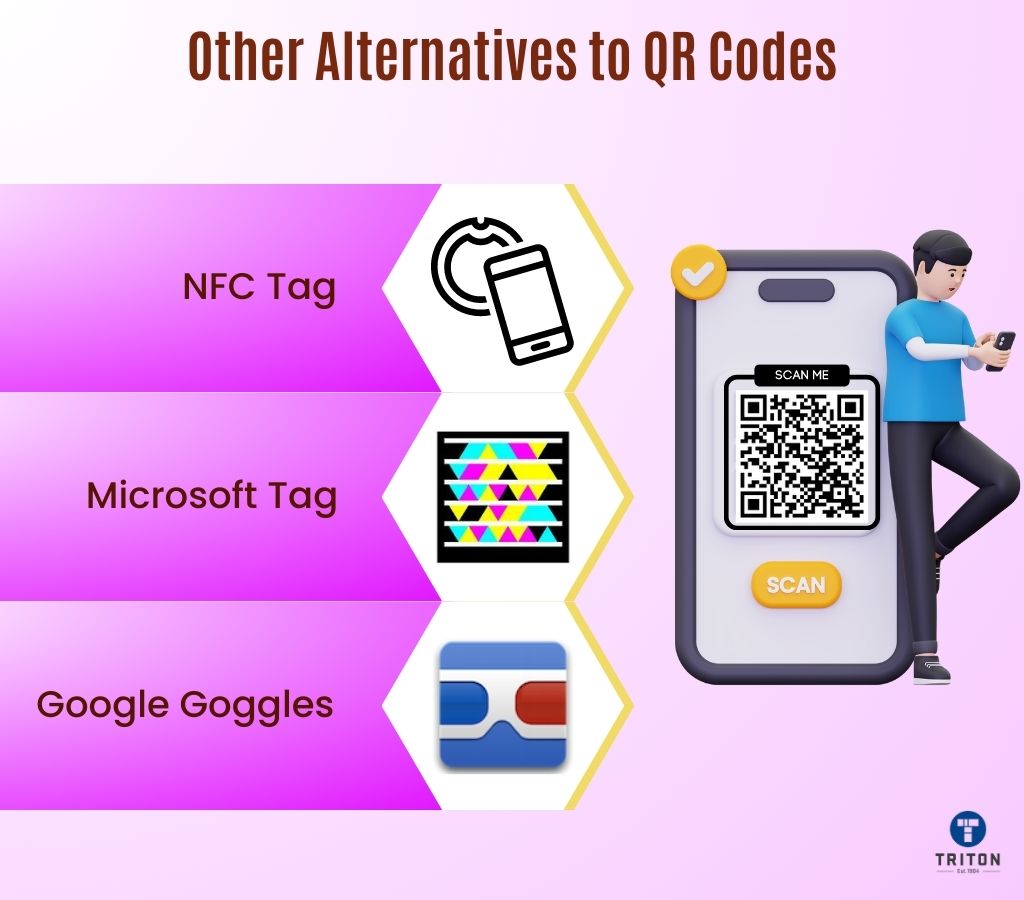
NFC (Near Field Communication) tags are small electronic devices that contain an NFC chip and antenna. These tags can communicate wirelessly with NFC-enabled devices like smartphones or tablets. NFC tags offer several advantages over QR codes, making them an increasingly popular choice for various applications.
Security is an area where NFC tags excel. The advanced encryption technology in NFC makes it highly secure and suitable for sensitive applications such as mobile payments. Popular payment services like Google Wallet and Apple Pay rely on NFC for secure transactions at stores.
Flexibility and ease of configuration are other advantages of NFC tags over QR codes. NFC tags can be easily overwritten or reprogrammed, allowing instant updates to the stored information.
Furthermore, NFC tags offer greater versatility in terms of form factor. They can be embedded or integrated into various objects and surfaces, including posters, product packaging, keychains, or wearable devices. This allows for the seamless integration of NFC technology into different environments and enables innovative use cases.
Microsoft Tag is a type of barcode that operates similarly to QR codes. When scanned by a Microsoft Tag reader, it directs users to online content associated with the code.
Microsoft Tags are known for their faster scanning capabilities compared to QR codes. The Tag reader quickly recognises and decodes the code, providing a smoother and more efficient user experience.
Furthermore, Microsoft Tags can be made as small as 3/4 inch, while QR codes typically require a minimum size of one square inch or larger. Creating smaller tags offers more flexibility for integrating printed materials or physical objects without compromising readability.
Microsoft Tag has one major disadvantage: it can only be scanned by devices with the Microsoft Tag reader app. This limits the number of devices that can read Microsoft Tag compared to QR codes, which can be scanned by many barcode reader apps.
Microsoft discontinued their support for Microsoft Tags in August 2015, and the responsibility for managing and operating the tags has been transferred to Scanbuy.
SnapTags are a potential alternative to QR codes that address one of the common complaints about QR codes, their aesthetics. In the world of data encoding technology, SnapTags offer a more visually appealing solution.
Like QR codes, SnapTags are scannable codes providing access to additional information marketers want to convey to consumers. However, SnapTags stand out by their ability to blend in with the overall design and branding. Unlike QR codes, which often appear as black and white squares, SnapTags allow users to use any image as the central element.
Surrounding the chosen image, SnapTags feature a “Code Ring” that can be positioned in thousands of ways, creating a vast array of unique codes. This versatility allows users to store different sets of information within each unique code, enabling tailored and targeted content for specific codes.
Additionally, SnapTags eliminate the need for users to install extra applications for scanning. Like QR codes, they can be scanned using a smartphone or tablet, making it convenient for users to access the associated information.
Google Goggles is a mobile application that allows users to take photos of various objects or landmarks and retrieve additional information related to those images. It is an alternative to traditional text-based search, enabling users to search using visual input.
For instance, taking a photo of the Eiffel Tower with Google goggles would provide search results displaying relevant information about its history, architecture, and tourist attractions in its vicinity. The application goes beyond simple image recognition and can even solve Sudoku puzzles, showcasing its diverse capabilities.
While QR codes are limited to providing specific predefined information encoded within the code, Google Goggles leverages the vast database of Google’s search engine to deliver comprehensive and relevant search results.
However, it’s worth noting that the Google Goggles application is relatively new and may only work optimally with some types of images or objects.
Additionally, the search results generated by Google Goggles typically lead to general search results pages rather than specific web pages or destinations.
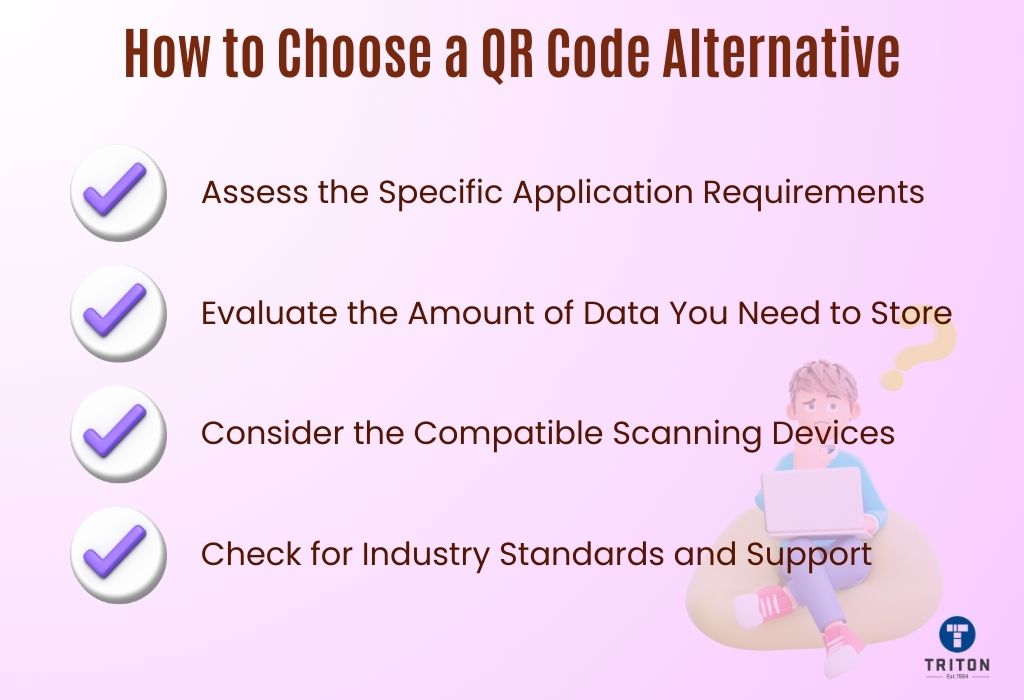
When considering alternatives to QR codes, it is important to evaluate several factors to ensure the chosen alternative meets the specific needs of your application.
Here are some key considerations to keep in mind.
Assess the specific requirements of your application. Consider the type of data you need to encode, the desired data capacity, and any industry or regulatory standards that may apply. Different barcode alternatives have varying capabilities and may be better suited for specific applications.
Evaluate the amount of data you need to store within the barcode. Some barcode alternatives, such as Data Matrix and PDF417, offer higher data capacities than QR codes. Ensure that the alternative barcode you choose can accommodate your data storage requirements.
Consider the scanning devices that will be used to read the barcodes. Ensure the chosen alternative is compatible with the scanning devices available or planned for your application.
Check if the alternative barcode symbology is accepted and supported within your industry. Ensure that resources, such as software libraries and technical support, are available to facilitate the implementation and integration of the chosen alternative.
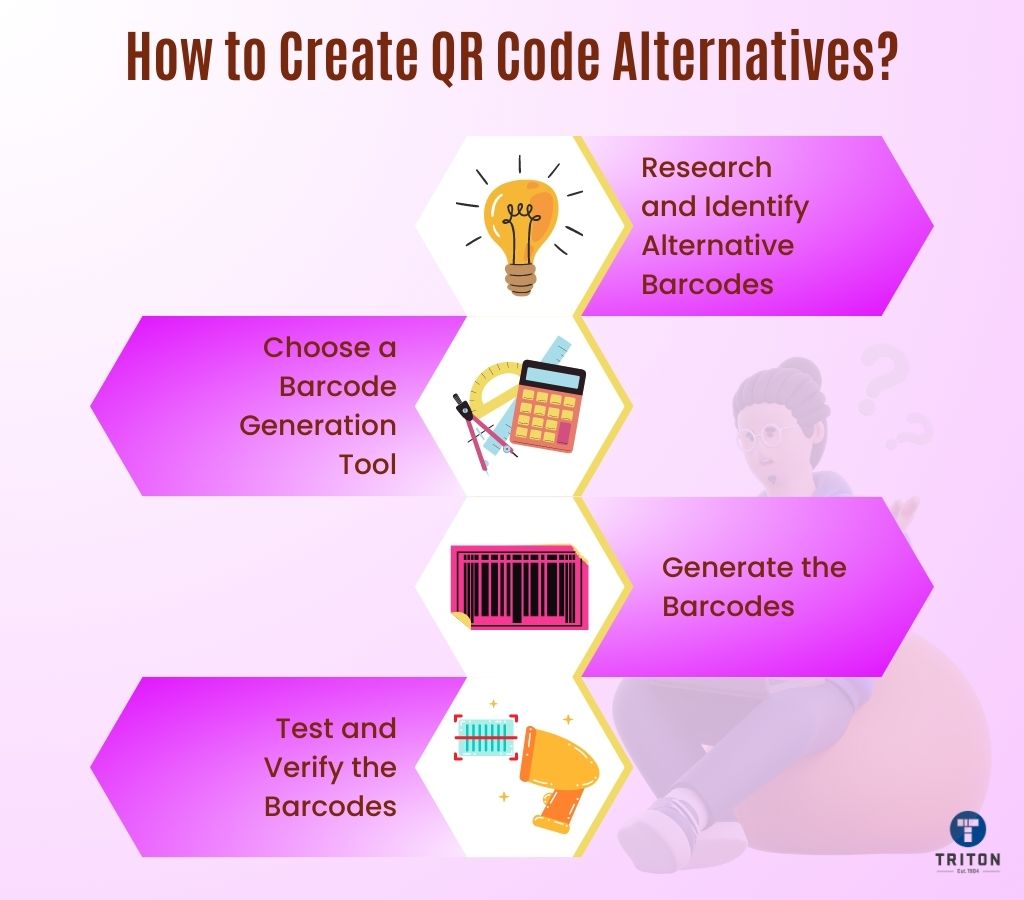
To obtain alternatives to QR codes, you can follow these steps.
When it comes to generating barcodes, numerous online options are available. Although free barcode generators may appear cost-effective, it’s important to consider the associated limitations. These limitations include a lack of customisation options, security features, and inadequate technical support.
Paid barcode generators provide more flexibility and customisation that free alternatives cannot match. Additionally, they offer enhanced security measures and reliable customer support, which can prove invaluable in case of any issues. Opting for a paid barcode generator is a wise investment for individuals or businesses looking to efficiently manage and create barcodes while enjoying additional benefits and peace of mind.
Seagull Scientific’s BarTender software is one of the most trusted barcode design and printing software.
BarTender by Seagull Scientific is a powerful software that seamlessly integrates with your existing business systems and provides an effortless label design and printing experience. With BarTender, users can create visually appealing labels with stunning graphics and text while also enjoying the convenience of automating and managing the entire labelling process. This innovative software goes beyond label design and printing, offering the ability to incorporate barcodes and even RFID tags, revolutionising the field of label design, management, and printing software.
BarTender software offers an extensive collection of 400 pre-formatted barcode components designed to comply with more than 105 barcode symbologies and numerous barcode standards. This comprehensive library empowers users with unparalleled flexibility to create various barcode types, meeting diverse industry requirements and applications. To learn more about this amazing software, check out our guide on understanding BarTender software.
At Triton, we prioritise the significance of selecting the perfect software solution tailored to your requirements. That’s why we provide an extensive range of BarTender Software editions. Our offerings include Starter Edition, Professional Edition, Automation Edition and Enterprise Edition, ensuring you can access the ideal edition for your operations.
Additionally, we are delighted to introduce the newest member of the BarTender family, BarTender Cloud. BarTender Cloud allows you to access and manage your label designs from anywhere, anytime.
Rest assured that with Triton, you gain access to top-notch software and enjoy the most competitive prices in the market. Embrace the future of label printing with Triton and revolutionise your business with BarTender Software!
To learn more about Seagull Scientific BarTender Software, contact us via the live chat widget below or fill out a form here.
In conclusion, in the ever-evolving digital age, exploring alternatives to QR codes opens up a world of possibilities. It allows businesses to harness the power of advanced barcode technologies.
While QR code usage has significantly enabled quick and convenient data retrieval, some limitations make exploring alternative barcode options necessary. By recognising these limitations, businesses and individuals can choose alternative options that suit their needs better.
So, whether it’s the compact size of Data Matrix codes or the versatility of NFC tags, an alternative solution is waiting to be discovered.
Thanks for reading!
Melbourne
Brisbane
Phone 1300 558 438
Live Chat – Widget below
Melbourne
Brisbane
Phone 1300 558 438
Live Chat – Widget below